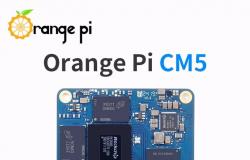During testing this Sunday, June 30, the first stage of the Chinese Tianlong-3 rocket, designed by the company Space Pioneer, detached from its launch pad and took off by mistake. The machine then crashed. A failure filmed and widely shared on social networks.
No injuries were reported after a rocket crash in Gongyi, central China, but the images are no less impressive.
This Sunday, June 30, the Chinese company Space Pioneer carried out a test of the engine of the Tianlong-3 rocket, which ended in a major failure.
In fact, the first stage of the device detached from its launch pad and flew away before crashing in a mountainous area of the city, which was evacuated for the occasion.
a problem with fixing on the ramp
On videos posted on Chinese social networks, then on X (formerly Twitter), it is possible to see the first stage of the rocket rising into the sky, before losing power and falling heavily.
The device then exploded in the mountains, between trees. The crash caused a fire on the ground, which was quickly brought under control according to the ministry in charge of emergency management.
In a statement, Space Pioneer blamed a structural problem in the attachment between the rocket and the ramp for the incident. “After takeoff, the onboard computer automatically shut down, and the rocket fell into the mountains 1.5 km southwest of the test platform,” the space company also explained.
Partially reusable, the Tianlong-3 rocket seeks to compare itself to the Falcon 9 from the American company SpaceX.
In April 2023, China’s Space Pioneer rocket launched its Tianlong-2 rocket into orbit on its first attempt. It was the first company to reach orbit on the first launch of a liquid-propellant rocket. More recently, China has also seen success with its Chang’e 6 probe, which brought back samples from the far side of the moon to scientists.






